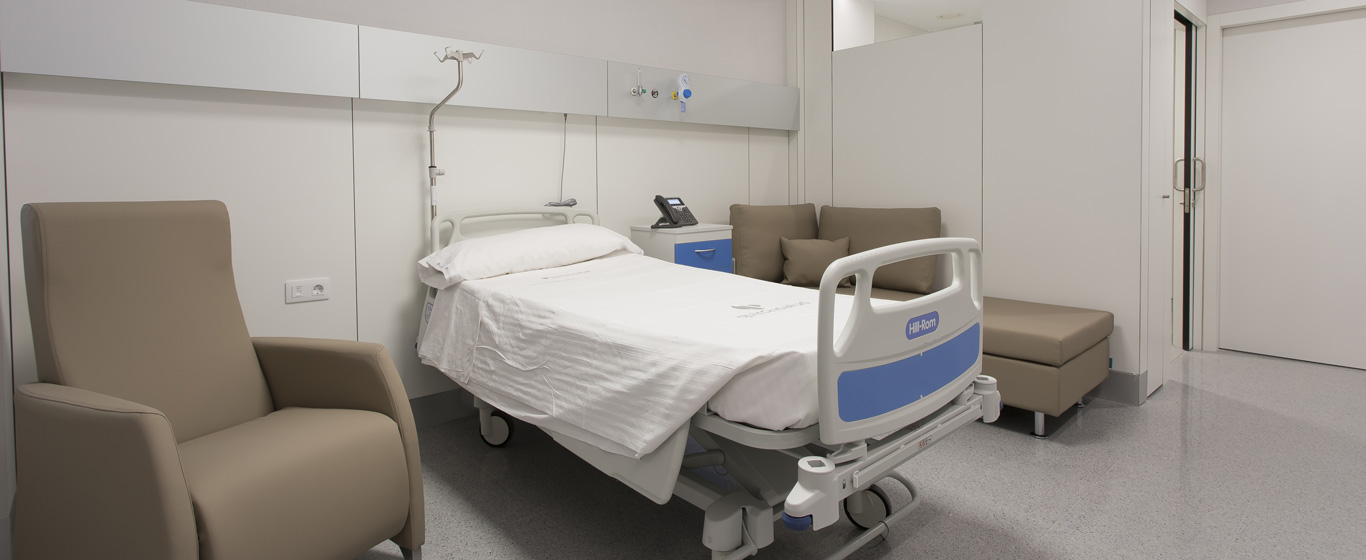Muscle Strain
Why do muscle strains occur? All the information on their causes, symptoms, and treatments.
Symptoms and Causes
A muscle strain is the involuntary and sustained contraction of a group of muscle fibers, causing stiffness and limited movement. It is a very common injury that can affect people of all kinds. The most frequent strains occur in the lower back, neck, and legs. This condition is not serious but can be very bothersome.
Based on its pathophysiology, three types of muscle strains are distinguished:
- Antalgic or compensatory strains: These occur secondary to an existing pain, usually in a joint. The muscles contract to immobilize the painful structure and reduce the pain. When the pain in the joint improves, the strain in the surrounding muscles diminishes or disappears.
- Painful strains: Abnormal muscle activity causes the contraction that, in turn, leads to pain.
- Cramps: Sudden, unexpected tension in one or more muscles, accompanied by an electrical shock due to nerve stimulation. It lasts briefly, only a few seconds or minutes, and can be relieved by stretching the muscle.
- Metabolic strains: These are caused by metabolic changes in the body related to movement.
- Analgesic strains: These are strains that occur without pain. They may involve fixed muscle contractions, such as in dystrophies.
According to their duration, strains are classified as:
- Variable or transient strains: These are caused by a specific event and last a short time.
- Chronic and progressive strains: These are more severe and persist for a long period.
Symptoms
The most common symptoms of a muscle strain are as follows:
- Muscle pain: It can be local, in the affected area, or referred to nearby areas.
- Knot: A hard lump in the area when the muscle does not relax and remains contracted.
- Stiffness and loss of flexibility.
- Limited mobility.
- Muscle weakness.
Causes
The origin of muscle strains depends on their type:
- Painful strains are mainly due to muscle overload caused by physical exertion or a sudden movement, especially in weakened muscles: the muscle contracts to prevent fiber rupture.
- Antalgic strains occur in response to trauma or injury: the muscles tend to contract as protection.
- Analgesic strains, on the other hand, are often caused by the continuous maintenance of poor posture, stress, or repetitive movements.
Occasionally, strains can occur due to dehydration or a deficiency of magnesium, potassium, or glucose, as these substances are essential for proper muscle function.
Risk Factors
The likelihood of developing muscle strains increases under these conditions:
- Intense or excessive physical activity.
- Sedentary lifestyle, as a lack of activity weakens the muscles.
- Presence of muscle, bone, and joint injuries.
- Work environments that require maintaining a static posture or performing repetitive movements (e.g., office or assembly line).
- Older age: muscles lose elasticity with time.
- Emotional stress that keeps the body in constant tension.
- Environmental cold: cold causes the body to involuntarily contract to maintain body temperature, which can overload the muscles.
Complications
An untreated muscle strain risks becoming chronic, causing constant and recurrent pain in the area, which can completely limit mobility and significantly affect daily activities, potentially becoming disabling. To compensate for the pain and limitation, the body may adopt abnormal postures, which in turn can lead to new strains and injuries. Additionally, the lack of mobility can lead to muscle atrophy, reducing muscle size and strength. In some cases, the strain may compress adjacent nerves, causing neurological symptoms like numbness, weakness, or neuropathic pain.
Prevention
To prevent muscle strains, the following advice can be followed:
- Stretch before and after exercise.
- Maintain a correct body posture, avoiding forced positions or movements.
- Avoid static postures and repetitive movements. If not possible, stretch every two hours in the most affected areas.
- Regular exercise to maintain good muscle tone.
- Reduce stress levels through relaxation techniques.
Which doctor treats muscle strain?
Muscle strains are evaluated and treated by specialists in traumatology, anesthesiology, physiotherapy, and pain units.
Diagnosis
The diagnosis of a muscle strain is usually straightforward, requiring only a physical examination. The affected area is carefully palpated to find lumps or areas with increased resistance, which indicate muscle fiber contraction. The presence of pain is also checked, as well as its relation (or lack thereof) to the mobility of the affected muscle.
Treatment
The appropriate treatment for a muscle strain depends on its origin and severity:
- Heat application: Heat has a vasodilatory effect, relaxing the muscle and alleviating pain.
- Pharmacological treatment: Administration of analgesics, anti-inflammatory drugs, or muscle relaxants.
- Massage therapy: Besides its relaxing and pain-relieving effects, manual massage increases blood flow, improving tissue recovery and metabolite elimination.
In the case of severe strains that do not respond to massage or medication, the following can be applied:
- Dry needling: An acupuncture needle is inserted through the skin to reach the painful muscle knot to directly release the muscle tension and eliminate the pain.
- Transcutaneous electrical stimulation: An electrical current is applied to the skin over the affected area to reduce pain.
- Transcutaneous iontophoresis: Ionized medications are introduced through the skin via a low-intensity electrical current applied to the tissues.
- Laser therapy: Specific light wavelengths are applied that have analgesic and anti-inflammatory effects.




































































